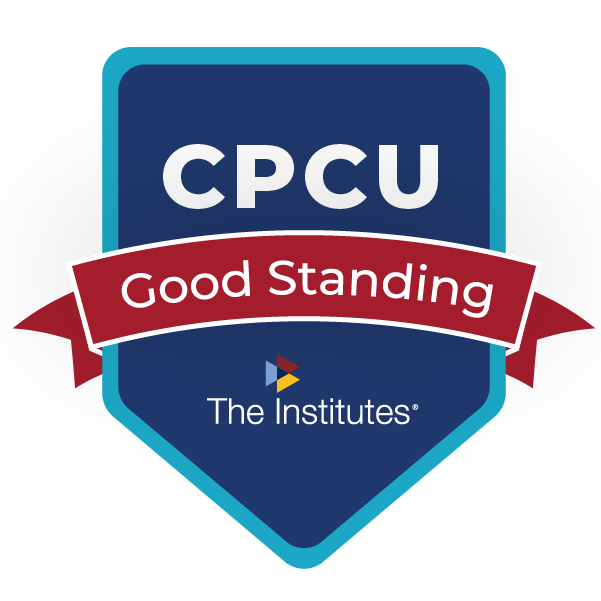Structured Settlements: Minors
First in a series of blog posts dedicated to helping clients decide when a structured settlement should be considered

Today’s Installment: Minors
May 1, 2019 – I once had a plaintiff attorney tell me he hated structured settlements “except for minors.”
“It’s the only way I can get a judge to grant my petitions,” he explained.
Judges had rejected some of his earlier petitions where there was no plan for the minor beyond a single lump sum payable at age 18 from a low interest-bearing blocked bank account.
He wasn’t wrong. While jurisdictions vary, generally courts prefer structured settlements to blocked accounts for a few reasons:
Better returns: With the exception of shorter-term payouts (under three years generally), particularly those with smaller recoveries ($10,000 to $25,000), a structured settlement is almost always going to project a higher payout than a blocked account;
100% tax-free income: Although this advantage disappears on small to mid-sized settlements since any interest earned in a blocked account will ultimately be exempt from taxation under the Kiddie Tax rules anyway, this advantage can be significant on larger settlements where taxes otherwise erode any interest earned in the blocked account;
Spendthrift protection: We all were teenagers once and can probably relate to a young person making rash financial decisions. Blocked account funds become immediately available upon attainment of age of majority (18 or other ages in some states). That’s great news for the high school graduation party planning committee. Not so good for the payee once the balloons have all popped;
Financial savvy encouraged: Since most structured settlements for minors are designed to pay sums in the future for the college years or beyond, the newly-minted adult learns the values of financial restraint and delayed gratification. Often, after making poor choices when their first annual installment arrives, they learn to better manage their money as time goes by and they mature;
Protection from predators: Large sums of money can attract leeches. And too often those leeches are people close to the minor. Funds paid out more slowly over time increases the likelihood the money will be used for a pragmatic purpose instead of something recommended by misguided, if well-inentioned, “friends” or relatives. Or, worse, con artists;
Judges are parents/grandparents too: The court assumes a parental role when approving minors’ settlements. Judges who themselves are or have been parents have told me they feel better about approving cases when they see the funds being set aside for a post-graduation purpose instead of a single lump sum at age 18 where it can be more easily squandered.
Blocked Account Or Structure?: Choosing and Implementing
Step One: After determining the net recovery, attorneys and guardians ad litem should compare a structured settlement single lump sum payout at age 18 to an estimated lump sum payout at age 18 using bank rates currently in effect (I use bankrate.com).
NOTE: While bank rates may change in the future (for better or worse), this is a good gauge to help determine whether a structure or blocked account makes more sense.
Step Two: Ask to see a plan or two (or three) showing what else can be done by spreading the funds out over ages 18-21 or longer. A traditional “College Plan” is a popular choice as is a plan that pays lump sums at ages 18, 21, and 25.
Step Three: After the basic framework is chosen, the structured settlement expert will seek out the best possible combination of financial security and price from among all the available markets offering structured settlements.
Step Four: The structured settlement expert’s firm will provide the necessary attachments for the court filings and coordinate all the appropriate paperwork necessary to properly conclude the matter. Once court approval is granted, documents are fully executed, and funds are dispensed, final contracts will be ordered concluding the settlement.
Final Thoughts
There will always be exceptions to the rule, but generally anytime a minor is age 16 or younger and/or the settlement net recovery is $25,000 or more, a structured settlement will be the better option and should be considered.
Although it is still possible to secure structured settlement proposals for less than $25,000, these quotes often carry built-in small case fees which erode the purchasing power of the structured settlement. Life companies have established minimum premium requirements ranging from $10,000 to $25,000.
Depending on market conditions, cases of $100,000 and above may be eligible for DAILY RATE pricing which can result in a more favorable payout at no increased cost.
In any given year, as much as half our firm’s activity involves settlements for minors. Because minors, unlike adults, don’t have the option to access all their funds in cash when their case settles, the forced choice results in guaranteed preservation of their recovery.
Editorial opinion: The broader injury settlement community-at-large would be better served if such a requirement existed on adult settlements. Adults, free to make unwise financial decisions with their settlement funds often do.
Posted: May 1, 2019 | by dan | Category: Articles, Blog, Structured Settlements

















